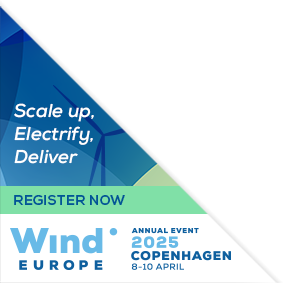Posters
Siblings:
ProceedingsProgrammeSpeakersPostersContent PartnersPowering the FutureMarkets TheatreResearch & Innovation in actionStudent programmePresenters dashboardCome meet the poster presenters to ask them questions and discuss their work
We would like to invite you to come and see the posters at our upcoming conference. The posters will showcase a diverse range of research topics, and will give delegates an opportunity to engage with the authors and learn more about their work. Whether you are a seasoned researcher or simply curious about the latest developments in your field, we believe that the posters will offer something of interest to everyone. So please join us at the conference and take advantage of this opportunity to learn and engage with your peers in the academic community. We look forward to seeing you there!

PO208: Site-specific offshore turbulence intensity (TI) to reduce design loads
Pedro Santos, Senior Engineer, DHI A/S
Abstract
Turbulence intensity (TI) is an important parameter that drives both fatigue and ultimate design load cases in offshore structures, including wind turbines and electrical sub stations. Here, we present an alternative to the method from the IEC 61400-3-1 standard. The model can reduce TI leading to reduction of loads and ultimately lowering the cost of steel. The method is based on a friction velocity directly computed from reanalysis models and does not require on site TI measurements. It is founded on the assumption that the wind can be well-represented by a chosen turbulence spectral model. In this work, we compute the friction velocity using an algorithm developed during the Coupled Ocean-Atmosphere Response Experiment (COARE). The friction velocity is then used to characterize the Kaimal spectral model, which when integrated provide the wind variance. Finally, the TI is computed and the 0.9 quantile of its distribution results in TI90 values. This approach was compared with the IEC 61400-3-1 and shows lower TI90 values across all wind speed bins. To assess the accuracy of this approach, the German research platform FINO1 was chosen, given the high-quality offshore TI observations at 81.5 mMSL. The observed TI90 agrees well with the proposed methodology, showing that the less conservative values, when compared with the IEC 61400-3-1, are closer to observations at this site. The proposed approach showed a root mean square error (RMSE) of 0.3 and a bias of 0.0 considering wind speed bins between 6 m/s and 27 m/s at FINO1. Hence, this approach is suggested as an alternative for the IEC models, with the potential to reduce conservatism and provide TI values based on site-specific conditions even in the absence of high-quality observations, which is commonly the case.










